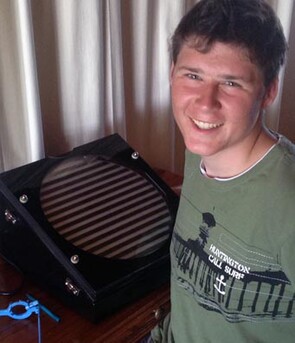THE ALISON LAWSON PROGRAM
Simple, safe, successful
The Alison Lawson Treatment in New Zealand and around the world has successfully treated hundreds of patients and we hope to change the lives of many more.
What to expect from the program
Treatment is unique and diverse, each client receives one to one support depending on their Individual requirements.
The first step is to book an assessment at the Centre. We will look at the functioning of the eyes and will determine if this unique treatment is recommended.
Good vision involves many different vision skills. Issues such as poor tracking, weak visual muscular control and unsteady fixation can go undetected at routine eye checks. For people with symptoms of dyslexia and learning challenges we find the eyes are usually not integrating well together, fixation of the aiming point in one eye is often unsteady. A check is made on the aiming point of each eye and several other tests are completed to confirm binocular vision and see how effectively the brain is using the eyes.
From there, we will provide our recommendations to you regarding treatment.
The Alison Lawson Treatment program is made up of ten (10) one hour treatments, utilising the Lawson Anti-Suppression Device (LASD). This is combined with structured home exercises that are completed between treatments where Tina, the client and family work together as a team in achieving set goals.
We also work with
Individuals who want improved brain function and clarity, along with sports professionals who are looking to improve in their sporting prowess, eg Golf Professionals, Surfing Champions, Business owners. We have treated Medical Doctors, Makeup Artists, Accountants, Trades people, Office staff, and many private Business owners from all walks of life.
Fast Facts
Patented system: The Alison Lawson treatment involves the use of a patented machine plus structured exercises to treat unsteady fixation. The Lawson Anti-Suppression Device (LASD) was developed and patented by Alison Lawson in 1979, and has been used ever since. Along with the full involvement and co-operation of the patient and parents/teachers if applicable, this treatment is a scientifically-based world-first. Results can be obtained in 10 x one hour treatments. At the conclusion of treatment, the patient has a higher standard of focus than even the average person!
Scientifically proven: Our treatment is safe, effective, and most importantly – based on scientific evidence! Our approach is supported by two specific clinical trials. Additionally, the LASD machine has been tested by OPSM and found to be safe & effective in its use.
Achievable treatment time: Lasting results can be obtained in 10 x one hour treatments. This can be completed over a minimum of two weeks and up to around 10 weeks.
Non-invasive: Unlike other treatments, our approach is not invasive in any way. There are no drugs, no glasses, no hypnosis and no coloured lenses.
The Science
The eyes and the brain need to work together.
Successful treatment heavily involves stimulation of the visual cortex, which is at the back of the brain. In pure medical terms, it is situated on the medial aspect of the occipital lobe in relation to the calcarine fissure. It is characterised by the distinguishing white line or stria of Gennari, which is visible to the naked eye.
The cellular structure of the visual cortex is of the highly granular type associated elsewhere in the cortex with sensory function. The outer and inner granular layers are made up of small granular cells densely packed.
A simple analogy of the visual cortex likens it to that of a ‘layer cake’ with seven layers, the eye simply being the camera. Utilising the LASD, the larger discs stimulate the upper layers of the visual cortex and the finest bands stimulate the deepest layer of the visual cortex.
The eye is like the camera and the visual cortex in the occipital (lower back part of the brain) area is the main receiving station of the visual impulses, whilst the frontal lobe (upper area) of the brain interprets what is being seen.
There should be steady binocular fixation. However, many times the fixation of one macula is very unsteady, or there can be an eccentric fixation. Demonstrating the main cause for the learning problem, the patient is able to obtain a clear focus at any level of gaze, but it cannot be maintained. As fixation fails, so does the patient’s concentration. As there is unsteady or incorrect fixation, the frontal lobe of the brain lays down deep central suppression in the visual cortex (occipital cortex) of the affected eye.
Signs and Symptoms
- Reading difficulties
- Work unfinished
- Spells badly
- Poor comprehension
- Forgetful
- Difficulty reading aloud
- Words moving/print distortions
- Easily distracted
- Behaviour problems
- Poor sporting ability
- Lacks confidence
- Low self esteem
- Headaches and tiredness
- Reverses Letters
- Labelled Dyslexic or ADHD
- Can read but does not read for pleasure
If you or your child displays symptoms listed please contact us to arrange a screening. We can accurately determine underlining causes and then discuss treatment if required.



